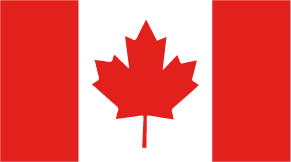Resource Center
What Qualifies as an ATA Carnet Shipment?
What Qualifies as an ATA Carnet Shipment?
An ATA Carnet shipment is designed to stay in a foreign country on a temporary basis and must not be intended for consumption. Items can be for commercial, professional, or exhibition use and can only enter a foreign country for a one year time period, though there are some exceptions to this timeframe, and with permission a replacement carnet may be purchased to extend this time period. These items must be re-exported in the same condition as they entered, so it is important they do not change in value, undergo any further processing, or transform in any substantial way.
An ATA Carnet is an international customs document that is presented when entering a Carnet country with equipment or products that will be re-exported within 12 months. There are more than 100 countries and territories located in Europe, North America, South America, Asia, Africa and Oceania where an ATA Carnet can be used. You can find a full list of countries currently accepting ATA Carnets here.
The main purpose of a Carnet is to temporarily import items into a foreign country without having to pay duties or taxes upon arrival or re-importation back into the country of origin.
When it comes to traveling with an ATA Carnet, you might want to know what qualifies as an ATA Carnet shipment? In general, there are three choices for the use of the items being temporarily exported:
- Commercial Samples: goods used to generate a sales order or used for demonstration purposes.
- Professional Equipment: items used strictly as tools of the trade.
- Exhibitions and Fairs: display items used at trade shows, fairs, and similar cultural events.
Along with reducing costs, an ATA Carnet shipment acts as a United States registration of goods and is valid for multiple trips for up to one year. It can cover a full range of merchandise including trade show booths, personal computers, satellites, machinery, diagnostic equipment, jewelry, video equipment, tools, vehicles and even rare gems. Carnets can even be used to cover more exotic and unusual items such as rare artworks, live animals, scientific equipment, aircrafts or pleasure boats.
Some examples of items that a Carnet won’t cover include pamphlets or hand outs, food items, plants, or other perishables that will be consumed in another country.
Looking for some real-world examples of what qualifies as an ATA Carnet shipment? Consider the following:
- A company taking mining equipment to Canada for a 6 month construction project.
- An American fashion brand taking their sales team to Paris for Market Week.
- A jewelry designer taking their new collection to Cabo San Lucas for a catalog photo shoot.
- A medical device manufacturer presenting at an exhibition in China or Hong Kong.
- A rock band moving tour equipment for their world tour with stops in England, Ireland, France, Germany, Croatia, Estonia, Hungry, Russia, Japan, Australia, and the U.S.
- A news crew with video equipment following a breaking story in Montenegro.
Obtaining an ATA Carnet is a quick, easy and cost-effective solution to the complications of moving merchandise to another country and back within a 12-month span of time.
Related Content You Might Have Interest In
Why Would One Choose to Use an ATA Carnet Over the Other Options?
Who are the Parties to the ATA Carnet?






